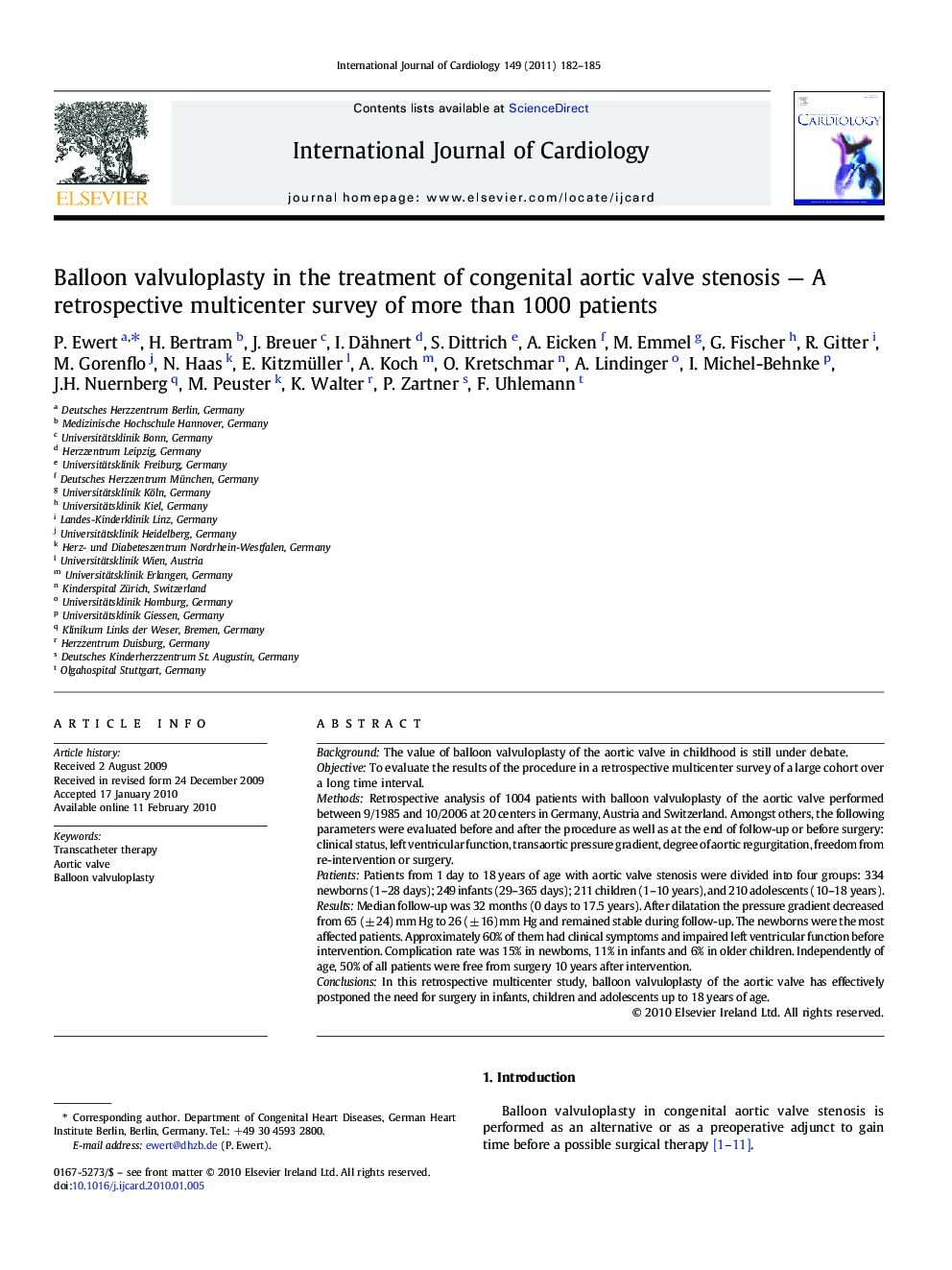| Article ID | Journal | Published Year | Pages | File Type |
|---|---|---|---|---|
| 5979082 | International Journal of Cardiology | 2011 | 4 Pages |
BackgroundThe value of balloon valvuloplasty of the aortic valve in childhood is still under debate.ObjectiveTo evaluate the results of the procedure in a retrospective multicenter survey of a large cohort over a long time interval.MethodsRetrospective analysis of 1004 patients with balloon valvuloplasty of the aortic valve performed between 9/1985 and 10/2006 at 20 centers in Germany, Austria and Switzerland. Amongst others, the following parameters were evaluated before and after the procedure as well as at the end of follow-up or before surgery: clinical status, left ventricular function, transaortic pressure gradient, degree of aortic regurgitation, freedom from re-intervention or surgery.PatientsPatients from 1 day to 18 years of age with aortic valve stenosis were divided into four groups: 334 newborns (1-28 days); 249 infants (29-365 days); 211 children (1-10 years), and 210 adolescents (10-18 years).ResultsMedian follow-up was 32 months (0 days to 17.5 years). After dilatation the pressure gradient decreased from 65 (± 24) mm Hg to 26 (± 16) mm Hg and remained stable during follow-up. The newborns were the most affected patients. Approximately 60% of them had clinical symptoms and impaired left ventricular function before intervention. Complication rate was 15% in newborns, 11% in infants and 6% in older children. Independently of age, 50% of all patients were free from surgery 10 years after intervention.ConclusionsIn this retrospective multicenter study, balloon valvuloplasty of the aortic valve has effectively postponed the need for surgery in infants, children and adolescents up to 18 years of age.
